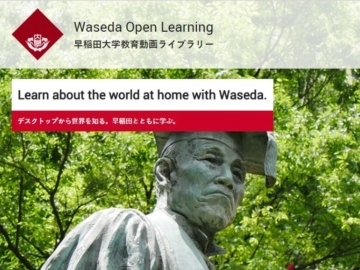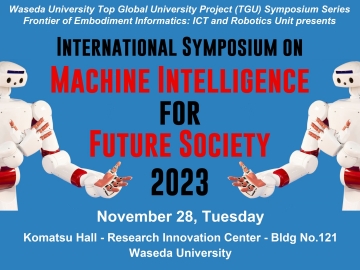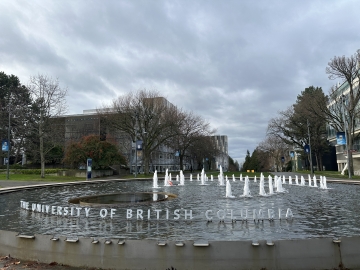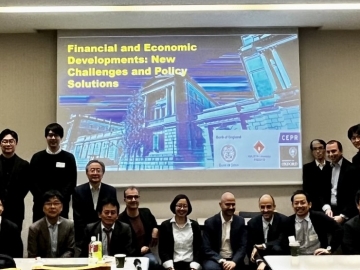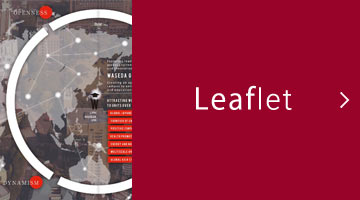The Center for Positive/Empirical Analysis of Political Economy hosted an online joint industry-academia symposium on March 1, 2023. The symposium aimed to explore the potential applications and recent academic studies utilizing mobile location data.
Session 1
- The Potential of Mobility Data Based on Docomo’s 85 Million Sample Data
Reiko Asano (DOCOMO Insight Marketing, Inc.)
Session 2
- “Invisible Killer”: Seasonal Allergies and Accidents
Mika Akesaka (Assistant Professor, The Research Institute for Economics and Business Administration (RIEB), Kobe University) - The role of social capital during the COVID-19 pandemic
Yuta Kuroda (Associate Professor, Graduate School of Economics, Osaka Metropolitan University)
- Nightless City: The Impact of Policymakers’ Questions on Government Officials’ Overtime Work
Munechika Katayama (Associate Professor of Faculty of Political Science and Economics, Waseda University), an organizer of the Symposium.
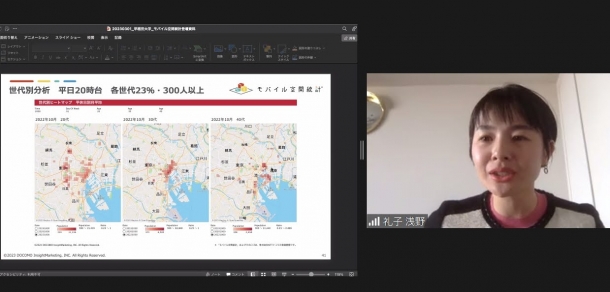
The first part of the symposium featured Reiko Asano from DOCOMO InsightMarketing, INC. who explained the basics and practical applications of mobile location data. The panelists and participants discussed the potential uses of this data, while new features that are soon to be available were also introduced. 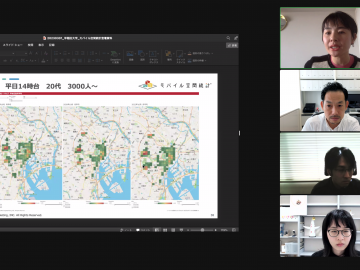
In the second part of the symposium, Mika Akesaka of Kobe University discussed the relationship between pollen allergies and accidents, using mobile location data to measure the degree of pollen avoidance.
Yuta Kuroda of Osaka Metropolitan University presented a study examining the relationship between social capital and mobility during the COVID-19 pandemic, utilizing a dairy city-level mobility index constructed from mobile location data.
Lastly, Munechika Katayama of Waseda University discussed the effects of exogenous increases in tasks on the overtime work of Japanese government officials in Kasumigaseki, measured through mobile location data.
The symposium concluded with lively discussions among the panelists and participants. The event provided an opportunity for students and industry professionals to learn about the latest developments in mobile location data and its potential applications in various fields.
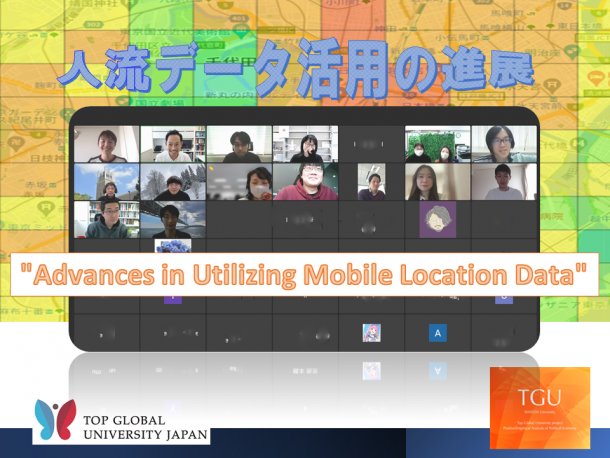
Student Report
TOYONO, Takumi
4th-year student at Department of Economics, School of Political Science and Economics
I attended this symposium because I wanted to learn more about how location data from cell phones (human flow data) has been used in recent empirical studies in economics although I participated in the similar symposium held in the last year titled “Utilization Methods of Mobile Phone Location Data” and figured out its characteristics and potential. The symposium consisted of two parts. In the first part, the content of DOCOMO’s provision of mobile spatial statistics, one of human flow data in Japan, and examples of its use were introduced, and in the second part, three reports on empirical studies in economics using the data were presented. The first part of the session consisted of a detailed explanation of human flow data, followed by the second part consisting of research reports using the data, whose flow made it easier for me to understand the data itself and consider under what conditions the data can be applied in research. It was a very useful opportunity for me to consider the future directions of my own research. The symposium was attended not only by undergraduate and graduate students and university faculty at Waseda University, but also by many people from outside the university, and the discussion time was enlivened by lively debates.
In the first part of the symposium, I heard a detailed explanation of human flow data by Reiko Asano from DOCOMO Insight Marketing, Inc. Specifically, I learned about the characteristics of human flow data, such as its ability to capture the distribution and movement of not only residents in Japan but also foreigners visiting Japan. In particular, I learned that the advantages of human flow data include the fact that, unlike GPS, human flow data from base stations can be reliably obtained as long as the power is turned on, and that the data is of high quality in that it provides a larger sample size than GPS.
In addition to the explanation of human flow data, many examples of its use were also presented. Specifically, I learned that human flow data is applied in a wide range of fields, such as traffic congestion prediction, descriptions of urban changes, store opening plans, public transportation, disaster prevention, and tourism for foreign visitors to Japan. Through these applications, I realized that human flow data is very valuable for clarifying various structures of the economy and society around us and for making better policy proposals. Furthermore, I noticed that there is a growing potential for companies and municipalities throughout Japan to utilize human flow data not only in academia, but also as a material for considering plans for opening new stores, for example, and reaffirmed the usefulness of human flow data in the real world.
In the second part of the symposium, three empirical studies in the field of economics using human flow data were presented. I listened to each presentation with an awareness of how human flow data is being used.
The first study, “‘Invisible Killer’: Seasonal Allergy and Accidents,” examined the question of whether pollen dispersal increases traffic accidents, and showed that pollen dispersal does indeed increase traffic accidents. On the other hand, there was no tendency to voluntarily avoid contact with pollen. The study’s focus on the familiar subject of pollen was excellent, and I learned that combining multiple data sets in an analysis can result in a convincing argument. In particular, the human flow data was used to understand whether people refrained from going out as an avoidance action against pollen contact, which was very informative as one way to use this data.
The second study, “How Long Do Voluntary Lockdowns Keep People at Home? The Role of Social Capital during the COVID-19 Pandemic,” examined how the effectiveness of the states of emergency in the COVID-19 pandemic varied by the amount of social capital. The study finds that people in regions with low social capital tend to go out more under the states of emergency than people in regions with high social capital, contrary to the policy goal, and that this trend strengthened as the pandemic progressed. With the demand for appropriate policy responses during the COVID-19 pandemic, I thought that this study was valuable in providing an important perspective on the amount of social capital in assessing the effectiveness of declarations of states of emergency. I learned something new about this data in that it is possible to identify whether or not people go out during a declared state of emergency, since the use of human flow data even allows us to obtain information on whether or not the subject is in his/her own residential area.
The third study, “Nightless City: Impacts of Policymakers’ Questions on Overtime Work of Government Officials,” was what I already heard at the symposium a year ago, but the study examined the impact of questionnaires on the overtime work of bureaucrats in Kasumigaseki, and found that bureaucrats’ overtime work significantly increased with the receipt of the questionnaires. The application of the human flow data was innovative, and it was very interesting that they used the human flow data to examine the problem of long working hours by bureaucrats, which has been a longstanding problem in Japan, by examining changes in the number of people in Kasumigaseki. The first and second studies did not specify a specific region to be analyzed, while this study focused on a specific region, Kasumigaseki, and therefore, it will be possible to use the human flow data in research not only for Japan as a whole, but also for a specific region of Japan and study the movement of people in that region.
With the rapid expansion of geographic information systems, I believe that the human flow data introduced in this symposium will be widely used in research in various fields of social science, including economics. Since human flow data captures almost exactly where people are located in Japan, there are sure to be many examples of its use in research related to human behavior. I believe that there is great potential for utilizing human flow data in health economics and economics of education which I am interested in, including non-pharmaceutical interventions such as the declaration of a state of emergency during the COVID-19 pandemic, which was introduced in this symposium. In addition to the administrative data and survey data that have been widely used in empirical studies in economics, I would like to engage in research activities with an eye toward the use of human flow data as well.
